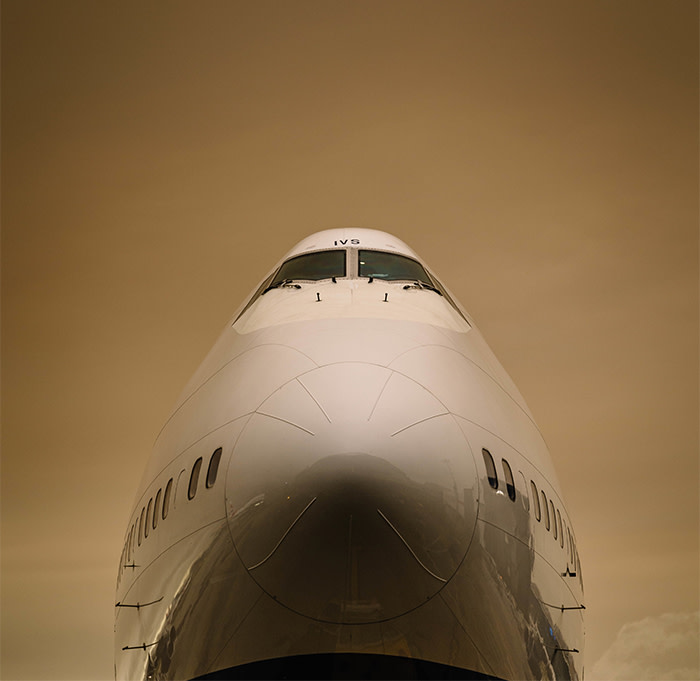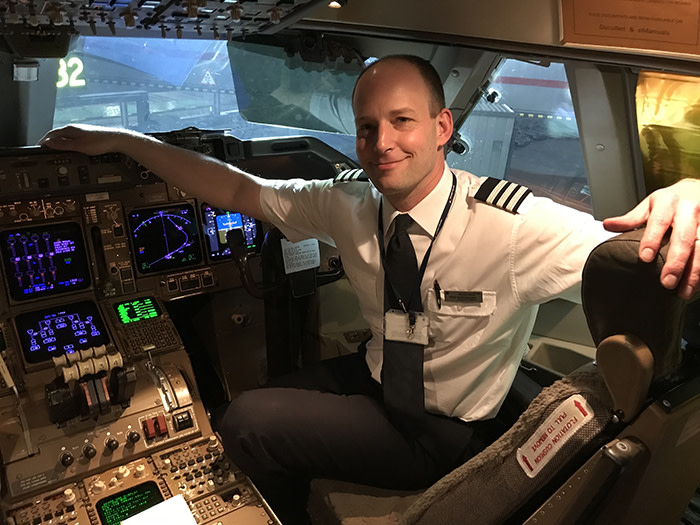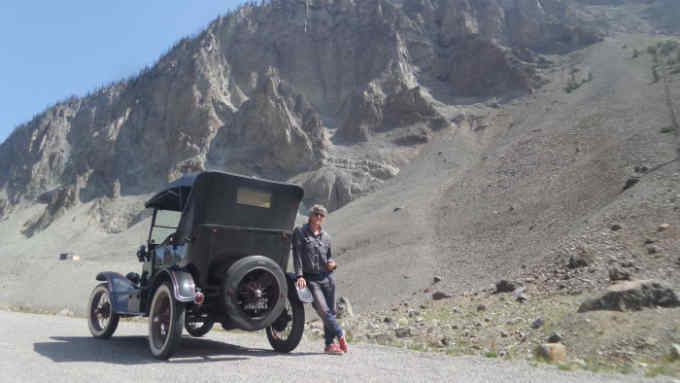Boeing out in style: a pilot’s final flight in a 747

Simply sign up to the Life & Arts myFT Digest -- delivered directly to your inbox.
“Nobody ever forgets their first time,” the captain said to me with a smile.
It was late 2007 and I was in the cockpit of a Hong Kong-bound Boeing 747, carefully taxiing what may well be our species’ greatest winged creation on to the northern runway of Heathrow airport. I’d completed months of classroom and simulator training and now, under the watchful eye of the training captain sitting next to me, I was just moments away from my first take-off.
The captain was right. Of the thousands of flights in my career as a pilot, it’s that first journey at the controls of a 747 that I remember best. Now it’s just over a decade later and I’m taxiing a 747 towards the same Heathrow runway with an entirely different set of emotions, because I’m about to perform my very last take-off on the jet that’s affectionately known to pilots as “QOTS” (that’s “Queen of the Skies”). Tonight, we’re bound for Cape Town.
Much has changed in the decade between my first and last 747 flights. Heathrow’s lighting has been updated, and so this venerable old runway now looks more like something out of Tron than anything the writer and aviation pioneer Antoine de Saint-Exupéry might have recognised. Inside the aircraft, the 747’s left and right brains, otherwise known as the two flight management computers, have been entirely upgraded. On the personal side, I’ve got married, written a couple of books about flying, and had a chance to fly to pretty much every major city in the world — including one trip to Sydney, 17 to Vancouver, and 41 to Los Angeles.
One thing that hasn’t changed over the past 10 years, though, is the unique exhilaration of take-off on a 747. As the tower controller gives us our official take-off clearance, I think back to what the training captain said to me at this same position, on this same runway, just seconds before my first take-off back in 2007: “Here we go. Enjoy it.”
I will. The thrust levers advance to their take-off setting and 370 tonnes of aviation legend slowly start to move. Soon after, we’re rolling across the Earth’s surface at roughly the speed of a bullet train. The captain calls “rotate” and I pull the control column backward. The 747’s tail drops, its utterly iconic nose lifts, and we rise surely and steadily into the night. We raise the landing gear and bank left towards the lights of Southampton, the city from which generations of Cape-bound Union-Castle ocean liners once set sail.
While the 747 has been in the news recently — as when Delta and United, the last two US-based operators of passenger 747s, bid farewell to their last jumbo jets — reports of its demise are at least a little exaggerated. Airlines such as KLM, Lufthansa and British Airways (my employer) still fly 747s. Not long ago the cargo carrier UPS confirmed a sizeable order for new 747s, reassuring the jet’s many fans that the QOTS will remain in production into the 2020s.
Nevertheless, as more modern airliners supplement or replace the 747, many pilots who have perhaps dreamt of flying one since childhood must say goodbye to it (as a young girl, one of my colleagues didn’t want to be an airline pilot; she wanted only to be a 747 pilot). I’ve made the decision to retrain on the Boeing 787, a new-generation aircraft that’s proved to be popular among crew and passengers alike (a more natural cabin air environment is one advantage; another is that while no jet may ever look as lovely as the 747, the 787, with its sleek nose and pleasingly upswept wings, isn’t exactly hard on the eyes).
But I’ve got a few hours and a few thousand miles to go yet on the 747, and as we cruise at our initial altitude of 31,000ft, the stunning views below — of Barcelona shining like a piece of well-lit jewellery in a pitch-black display case, and then Algiers, and the dendrites of light running south across the Atlas Mountains and fading into the Sahara desert — are a chance to reflect on an aeroplane that’s meant the world to me.
Since childhood I’ve had an irrational love for the 747 — for its size, its unique shape, and above all for the wonder and sense of freedom that those three famous digits so effortlessly conjure up. My Twitter handle is @markv747. I use the same formulation for my personal email address. Perhaps the most absurd expression of my love for the 747 came on a trip to Texas a few years back. At Space Center Houston, the home, of course, of many wonders of the space age, I saw a certain iconic shape parked outside the entrance, and said to my partner, all but involuntarily, “Oh, wow! A 747!” Keep in mind that the only reason I was in Houston was that I myself had landed a 747 in the city only a few hours earlier, and you’ll begin to appreciate my passion for this aeroplane.
The 747, which first took flight in February 1969, in the lead-up to the moon landing in the summer of that same year, was said to inaugurate the “Spacious Age” of travel. It was more than an easy play on words — parts of the 747’s advanced navigation system were derived from technology used on the Apollo space programme, for example. But it was the size of the jet, and a passenger capacity more than double that of its predecessors, that revolutionised the economics of air travel, and, in turn, changed our relationship with distant peoples and places.
I’m as much a fan (and a beneficiary) of that cultural shift as anyone could be. Yet even I haven’t quite grown accustomed to the technological and historical dimensions of journeys such as tonight’s flight to Cape Town. Tomorrow afternoon I’ll go for a hike around the Cape of Good Hope, near two crosses that commemorate the journeys of Bartolomeu Dias and Vasco da Gama, half a millennium ago. As we sail now between the stars above and Cameroon below, I wonder what the two explorers would have made of all this: the crystal-clear readout of our position on the cockpit screens, the moving maps glowing softly behind hundreds of passenger seats, the great wings of the vessel, tipped with lights, lifting us and our breakfast trays across an entire night and continent.
We’re routing south-west now, roughly parallel to the Congo river, and it’s time for my break. I head to the little bunkroom inside the cockpit. The “heavy”, or relief, pilot takes my place in the cockpit’s right-hand seat. (On the return journey, in a few days, it’ll be my turn to be the relief pilot, who doesn’t perform the take-off or landing.)
Soon we’ll be flying over the former Belgian Congo, where my father lived in the late 1950s. He loved aeroplanes, and surely couldn’t have imagined that a son of his would cross these same skies some 60 years later. As I unroll my blue sleeping bag, I recall a story he told me, about a flight he once took on a DC-7C (as in “Seven Seas”), an aircraft that weighed only a fraction as much as a Boeing 747. That flight made an unscheduled stop, during which my father watched the pilot, sweating under the tropical sun, repair a troubled engine with a part taken from a working one.
As I fasten my seatbelt over my sleeping bag, that story reminds me of a marvellous statistic once cited by the aviation historian Douglas J Ingells. The output of the Wright brothers’ first engine was about one horsepower per 10 pounds of engine weight. It was only decades later that the mighty and revolutionary turbofans of the first 747 finally inverted this ratio, producing 10 horsepower for every pound of weight. My dad, who died in 2005 and who never flew on a 747 with me, would have loved that statistic, I think. Amid the soothing, muffled whoosh of four of Rolls-Royce’s finest engines, I drift off to sleep.

Three or so hours later the tell-tale “ding-dong” of the 747’s wake-up chimes echoes through the bunkroom. I return to the cockpit and pause as my eyes adjust to the blinding brilliance of a high-altitude, southern African morning. I ask for a white coffee and a full English breakfast. To my right, I gaze down on crimson dunes, rolling in clean lines as neatly as surf: the Namib desert. Off to the distant left, through the captain’s windows, it’s the Kalahari.
We complete the descent checklist and soon it’s time for me to update the passengers. I always mention the potential for views when arriving in Cape Town. The weather here rarely disappoints, and for many passengers, of course, a journey to Cape Town is the trip of a lifetime. I can already see Table Mountain ahead and the line of peaks running south from it toward Cape Point, beyond which the sea and sky merge into a stately blue haze. Often when I fly here, I think that this is the bluest place on Earth.
Steadily descending, we’re soon out over False Bay. It sparkles in the morning sun, with long, disturbed patches that reflect the light differently — the marks of breezes moving across the water, as obvious and pleasing as the footsteps of an invisible character in a cartoon. Cape Town, like nearly all of Africa, is behind us now. Straight ahead there’s only Antarctica. We start the first of the graceful turns that will bring us back to land.
Just before we cross the coastline for the second time we lower the landing gear. The captain says “good luck” — the usual allusion to the film Airplane!, and a bit of gentle ribbing that any pilot who writes a book called How to Land a Plane has asked for in spades.
Cape Town’s main runway — 61 metres wide, 3,201 metres long, at an elevation of 144ft — is straight ahead now, and as clear as the morning itself. At about 30ft I pull the nose of the great jet up ever so slightly and start to close the thrust levers that I first opened wide in the darkness of London, 11 hours and 6,000 miles ago. Now the 747 hovers just above Africa, its stationary wheels waiting for the contact that will speed them up once again, and that will bring my happy years flying the aircraft I dreamt of as a child to a close. All too soon, it seems, we touch down.
Once parked at the gate, I say farewell to our passengers. As I thank them I can’t help adding that “I hope you’ve enjoyed flying to this beautiful city, on this beautiful aeroplane, just as much as we did.” Then I head downstairs to the main deck to say goodbye to a few hundred customers in person.
Inside the terminal, my colleagues take a picture of me. The silent jet fills the windows behind me. As we walk toward passport control I turn my phone on. Amid the “Welcome to South Africa” messages there’s an email from a pilot who’s a good friend. He asks about my last flight and points out the 747-acclaiming email address that he’s just written to me at. “Time to change it, eh Mark?” But he’s joking, of course — he knows as well as I do that it’s one to keep.
Mark Vanhoenacker is a pilot for British Airways and the author of ‘Skyfaring’ and ‘How to Land a Plane’
Do you remember your first flight on a 747? Share it with us in the comments below
Letter in response to this article:
Memories of Boeing and the unique 747 / From Tony Price, San Diego, CA, US

Comments